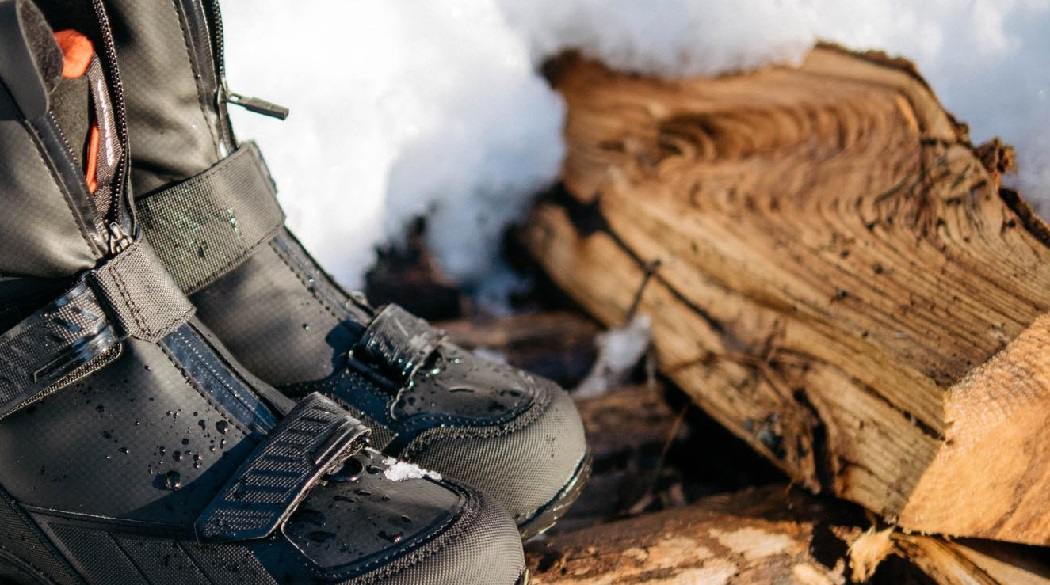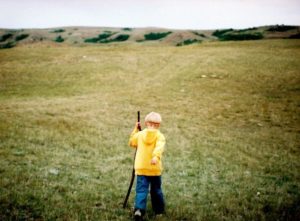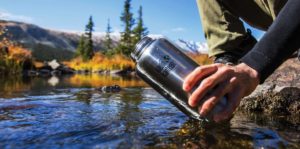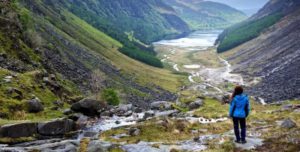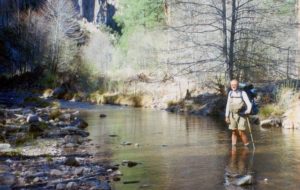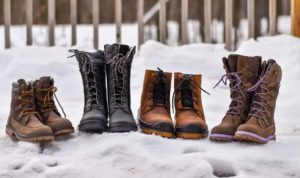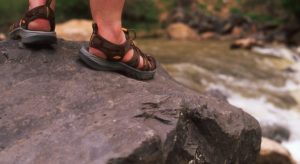What’s the best pair of winter boots to keep your feet warm and comfortable all winter long? To find out, we tested ten of the most popular and highly-rated models to determine which ones kept our feet the warmest and driest. Testing each pair over several months, we evaluated them for their Warmth, Water Resistance, Fit and Comfort, Ease of Use, and Traction.
Our testing covered a wide range of styles, from insulated winter hiking boots, to easy to use slip-ons, to classic style Pac boots. Whether you’re looking for a pair of boots for a family ski vacation, winter hiking excursion, or to traverse slush-covered streets every day on your commute to work, we’ve got the best boot for you. Read on to discover which pair might best suit your needs.
Click here for the Women’s Winter Boots Review
Best Winter Boots – Quick Answer
- Best Overall Winter Boot for Men: The North Face Chilkat 400
- Best Bang for the Buck: Kamik NationPlus
- Best for Ease of Use: Bogs Classic Ultra Mid
- Best for Winter Hiking: Vasque Snowburban Ultradry
Table of Contents
Best Overall Winter Boot for Men: The North Face Chilkat 400
- Comfortable
- Very warm
- Totally water resistant
- Great traction
- Fit is short (order up in size)
- Mildly laborious to tie up
We tested The North Face Chilkat 400 for the first time and boy are we glad that we did! Exceedingly comfortable in a snug and cozy way, this boot by far proved to be the best option for winter hiking, whether that means through the ski town to get to the base of the lifts, or with snowshoes on for a winter adventure. Among the warmest that we tried, this boot is also completely waterproof, a combination that ensures your feet will be comfortable no matter what you may encounter.
What really sets the Chilkat apart is the flexibility and softness of its tall upper shaft. While virtually all winter boots have a very high top to protect from unwanted snow entering the boot, very few succeed in making this feature comfortable to walk in all day. Rubbing, itching, chafing, and even shin-bang style bruising were common complaints from wearing uncomfortable tall boots for long hikes, but not with the Chilkat! Not only do we think this is the best boot for winter hiking, but it’s also our Editors’ Choice award winner as Best Overall Winter Boot.
Best Budget Pick: Kamik NationPlus
- Warm
- Comfortable
- Very affordable
- The best traction
- Leaks
- More labor intensive to put on than others
The Kamik NationPlus boot was our favorite tested Pac boot for its warmth and comfort. It has a thick and well-cushioned Thinsulate inner boot that kept our feet warm into the single digits, and the design of the midsole made walking long distances comfortable, which is rare for a Pac boot. The large, aggressive lugs are made with soft, sticky rubber; in turn, the lugs provided the best traction on ice of any boot in our test, and it held its own on snow and dirt as well. While it wasn’t the single best boot we tested, the thing that really set it apart is its price.
Retailing very cheaply, this boot is the most affordable that we tested, by quite a margin. With such high performance, and at half the price of some of the other boots in this review, it was easy to choose the Kamik NationPlus as our Best Bang for the Buck award winner. For those with higher volume feet, we encourage you to check out the Kamik NationWide, a wide-bodied version of this boot.
Best for Ease of Use: Bogs Classic Ultra Mid
- Very easy to use
- Super spacious fit
- Not as warm as other boots
- Not the best traction
- Some quality control issues
In the past, the Bogs Classic Ultra Mid has been our choice for best overall hiking boots. Despite better boots showing up on the market, we still want to recognize it for its incredible simplicity, which is unique among this selection of boots. Endeared to our hearts, we have kept it as our best pick for ease of use.
During our ice bucket test, two separate pairs of our test boots leaked water in through the seam, between the outsole and upper; thus, the Classic Ultra Mid received a very low score for water resistance, as it deserved. However, despite the manufacturing defect in our boot (and testing a second pair, which also leaked), and complaints of similar things happening to other users, we believe that these are great boots for people who spend lots of time in the cold snow, and avoid standing in puddles of water.
The bottom line is that they slip on in a second and fit easily with any sort of sock combination, making them the best and easiest choice for winter-time chores such as shoveling the driveway, taking out the trash, or getting the mail. If you live in the snow as we do, then you understand how big of a deal this really is. We just want to be sure to point out that if you live with your feet in the water, then these boots probably are not going to cut it for you.
Best for Winter Hiking: Vasque Snowburban Ultradry
While many reading this review only need a boot for around town and the occasional trip to the mountains, there are those out there who don’t want to stop hiking their favorite trails even after the snows have started covering them. We had several strong candidates for the boot we wanted to grab most often when it came to hiking over the rough, uneven or slippery ground, whether on foot or snowshoes, but with the best traction and lightweight warmth and water resistance, the Vasque Snowburban Ultradry quickly rose to the top. It scored high in almost every category except for Ease of Use (the lacing system is somewhat cumbersome), and we recommend them to anyone who is looking for a solidly built, warm boot that will handle winter hikes confidently and will continue to provide performance into the shoulder seasons.
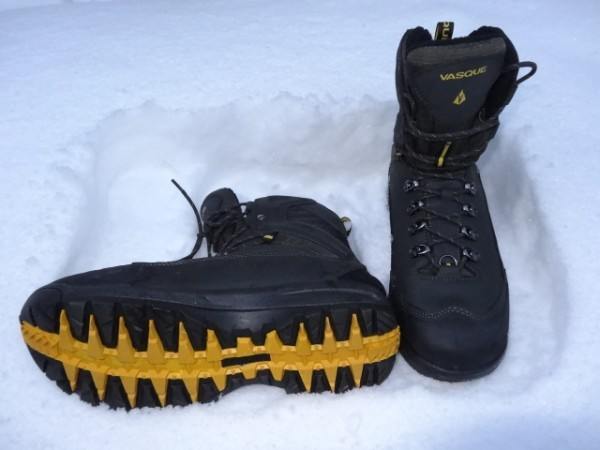
Choosing the Best Winter Boots for Your Needs
When selecting the best winter boot for you, you’ll want to consider your main intended use for them. Do you need a thick and heavily insulated boot designed for long hours outside in cold climates, or something that is more streamlined for functionality during active winter sports?
Or perhaps you need a stylish pair for commuting that still keep your feet warm and dry. And while you might own a variety of running or hiking shoes for different conditions, most people only own one pair of winter boots, so you’ll want something that is versatile enough for wearing outdoors in poor conditions, whether it be running errands on a bad weather day or going out to the local park to build a snowman with the kids.
Types of Boots
There are many different types of winter footwear available, so we must establish some broad definitions to categorize this group with. Most consumers will want to first look at the Pac boot and slip-on boot categories, as these tend to offer the best warmth and comfort for most day-to-day use, with more universal fits and casual styles.
Those who are looking for more active footwear for walking, snowshoeing and wintertime hiking may want to skip ahead and look at the insulated hiking boot category, which will showcase more performance oriented boots.
Pac Boots
A pac boot is what immediately comes to mind to many of us when considering winter boots. By definition a pac boot is “a soft, flexible, heelless shoe worn as a liner inside a boot or overshoe.” Modern day pac boots owe their design to the original winter footwear of the Inuit called kamiks, which were made of seal or animal hide.
While providing excellent warmth and stealth for days on the ice, kamiks boots undertook a more durable form when paired with a thick-soled outer boot. While quite warm, pac boots tend not to breathe well, leading to increased perspiration. Luckily the inner liners of these boots are easily removable (though not that easily replaced) in order to dry them out.
In 1962, Sorel introduced the Caribou model, which became an instant classic incarnation of the pac boot design that is still in wide use today. We tested the Sorel 1964 Premium T in this review, another example of a classic pac boot. The simple construction of the pac boot leads towards a warmer, though inherently loose-fitting boot. These are great lifestyle boots and are ubiquitous in ski towns from coast to coast. Our Best Buy award went to the Kamik Nation Plus, a budget-friendly pac boot that is well suited to hard winters.
Slip-On Boots
This is another example of a broad category that many boots may fit into, but simply describes any boot that does not feature laces or other means of further securing the foot. Slip-on models may be made from leather, rubber, neoprene, sheepskin or synthetic materials. There is usually some helpful accessory like a pull tab or handles that aid in putting the boots on, and often a heel counter on the back to help kick off them off when coming indoors. These boots typically rate very high in the ease of use metric, though fit is often compromised. Because there are no laces to customize the fit, good slip-on boots need to be well-shaped or molded to ensure a good fit for walking long distances. Our Editors’ Choice winner, the Bogs Classic Ultra Mid, is a classic example of a slip-on style barn boot and was designed for serious mucking about on the farm. The other slip-on boot we reviewed was the Romeo-styled Keen Anchorage II, a comfortable and convenient around town insulated boot.

Insulated Winter Hiking Boots
Because of the inherent loose fit that comes with pac boots and some slip-on boots due to their inner liners or lace-free designs, manufacturers also make boots that incorporate waterproof outers, insulation, and inner liners into a single boot that is thinner and more adept at walking longer distances and performing during winter activities. These boots often feature less overall insulation than their pac boot counterparts because they are designed to be used during more active situations. For a secure fit these boots need to be snugly laced, and this category features boots that use tradition lace up systems as well as more modern speed laces like those on the Adidas Outdoor Terrex Conrax CP. For better comfort during walking, the height of these winter hiking boots ends above the ankle, but not as high as on pac boot models, and more effort is put towards creating aggressive soles that can actively grip in the snowy and icy conditions one might encounter while hiking along wintry trails.
While some of these boots, including the Top Pick for Winter Hiking Vasque Snowburban Ultradry, are great contenders for three-season backcountry endeavors like a spring ascent of Mount Whitney via the main trail, we recommend wearing durable double mountaineering boots, like the La Sportiva Spantik, if you plan to camp out overnight during the winter. Although they may be comfortable during the daytime, these single layered hiking boots are difficult to dry out while on overnight hikes in wintertime temperatures and may result in cold injuries if taken beyond their limitations. The Keen Summit County III, Columbia Bugaboot Plus III Omni-Heat and The North Face Chilkat II are all good examples of insulated winter hiking boots that we tested in this review.
Whether you plan on using your winter boots for the occasional trip to the ski hill, or wear them every day as an insulated work boot, using a well-fitting, warm and weather resistant boot is going to enhance your winter experience and allow you to focus on the task at hand, no matter if that is walking to the bus stop or pelting your friend with a snowball. Below you’ll find how the different models we reviewed ranked in our testing categories to give you, the consumer, better insight into selecting the right boot for you.
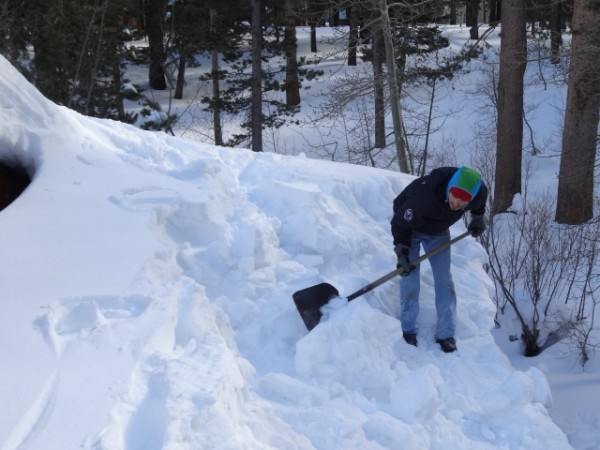
How We Picked
In order to present our test findings in the most thorough way possible, we rated every boot based upon five separate criteria, giving them a score from 1 (terrible) to 10 (perfect). As this is a comparison review, the scores were decided upon by comparing each boot to all of the others. With that thought in mind, it is worth noting that just because a boot receives a low score for Warmth, does not necessarily mean that it is not warm, but instead that it is less warm than the other boots in the review. Below we have described our criteria for evaluating each category, as well as what boots performed the best and worst in these categories, and finally, the weight that each category had in determining a product’s final score.
How Warmth are the Boots?
Warmth is one of the most important metrics when rating winter boots. Winter boots are by nature designed to be worn during cold months, and they need to be able to keep our feet warm when standing around in the snow and cold temps. All of the models we reviewed had a quantifiable amount of insulation, whether it was a thick felt or neoprene liner, or between 200 and 400 grams of synthetic insulation. An interesting standout was the Columbia Bugaboot Plus III Omni-Heat that uses Omni-Heat reflective material to achieve a warm boot without the heavy loft of bulky insulation.
All insulation materials simply trap and reflect the heat created by the foot, so proper fit is also required to maintain adequate circulation. A boot can have plenty of insulation, but if it constricts the blood flow to your foot the boot will feel cold. While packed with lofty insulation, the Columbia Bugaboot II Slip On was so small that the loss of circulation caused our feet to feel cold even when worn indoors. This is why fit and comfort, discussed below, are just as important as warmth when selecting a boot, as the wrong fit will quickly lead to cold feet.
We noticed that the two warmest boots in our review this year were the two boots that upped the insulation a notch to include 400 grams, rather than the more ubiquitous 200 grams used by many boots. These were The North Face Chilkat 400 and the Vasque Snowburban UltraDry. On the other hand, the Merrell Polarand Rove Zip, despite using 200 grams of insulation like most every other boot, had a full-length side zipper that noticeably leaked heat out and allowed cold to seep in, providing the least warmth in the test.
While we tested the warmth of every boot out in the field, in order to provide a more accurate head-to-head comparison, we also wore each boot with a light sock in a slushy ice bath for eight minutes at a time to get a true feel of how warm they were, or whether they let in the cold. The results of this test were fairly easy to quantify. We must point out that while many of the boots are rated by their manufacturers to temperatures as low as -40 degrees Fahrenheit, we never encountered temperatures nearly that cold in southern Colorado while testing. Warmth accounted for 25% of a product’s final score.
Always take a manufacturer’s warmth or comfort rating with a grain of salt, as they don’t always correlate to real-world findings.
Water Resistance
If you are looking for a winter boot, then you probably live in a climate where winters are cold and the streets are snowy and slushy. Whether the precipitation falls as rain or snow, it needs to stay on the outside where it belongs if you want to avoid being uncomfortable and having cold and wet feet. All of the models we reviewed feature some kind of waterproof barrier to keep moisture out. Some boots, like the Sorel Caribou, use simple waterproofed leather outers, while others, such as the Salomon X Ultra Winter CS use a combination of waterproofed nylon or synthetic fabrics. Most boots also use a rubber bathtub style wrap around the sole for added water resistance.

The reason behind such attention to waterproofing is that water conducts heat (or cold) far more effectively than air does alone, and so cold water will freeze a foot much faster than cold air. We also have to remember that winter is a time when the ground, where we walk, is most often covered in snow, ice, or slush, which are all forms of frozen water.
Moisture also can build up on the inside of the boots and will cause coldness just the same as if the boot had sprung a leak. Pac boots and full grain leather boots experienced these symptoms the most in our review, as they did not provide the same breathability that a waterproof-breathable membrane does. Consider this as you shop for a boot that you will exert yourself in, like in winter sports, especially if there might be a lot of time spent standing around, since a boot with less insulation may not make your foot sweat as much, but will cool off and cause cold feet faster.
We must remember that all of these boots are waterproof except for the large hole in the top of them, meaning that they are only as waterproof as they are tall. Boots like the Sorel Caribou and The North Face Chilkat 400 are quite tall and have high maximum puddle depths before allowing water inside, while the athletic Adidas Outdoor Terrex Conrax CP has such a low cuff that care must be taken with snow or slush even a few inches deep.
Also, while all the boots included an attached tongue to keep out water that should end up on top of the foot, the tongue height varies in different models, and this effectively becomes their maximum puddle depth. The Sorel Caribou, a very tall boot with a completely attached leather tongue, was the most water resistant boot in our test. On the other end of the spectrum, our model of Bogs Classic Ultra Mid had a leak in one of the seams above the outsole. Likewise, due to design, the Merrell Polarand Rove Zip and the Kamik NationPlus both had relatively low water entry points. Water Resistance accounted for 25% of a product’s final score.
Fit and Comfort
Getting a proper fit may be more or less important depending on the type of boot you choose, and since people’s feet come in all shapes and sizes, finding the perfect fit is very subjective. We have spent enough time in each one of these boots to make fit recommendations, such as width, street shoe sizing, and foot volume, to help you narrow the choices down. Remember, though, that there is no substitute for trying them on. Pac style boots will have a loose and somewhat sloppy fit when compared to a single layer hiking boot, so we have tried not to compare apples to oranges in that regard. Some boots will readily accept an aftermarket insole for those who like extra arch support or who need to use custom orthotics in their footwear, while others, like The North Face Chilkat, do not have the extra room for one.
All of our award winners had great fits and were very comfortable. Our Editors’ Choice award winner, The North Face Chilkat 400, has a comfortably snug fit that makes it a great choice for active use, although some people may wish to size this one up half to a full size. Our Best Buy winner, the Kamik NationPlus, also has a great fit, particularly for a Pac boot, which are notorious for feeling a little sloppy. The Vasque Snowburban UltraDry topped the pack in comfort and fit as well. It was one of the least bulky models and it felt great on even after long days, which is key in a hiker.

The poorest fitting boots tended to still be quite comfortable, although very sloppy. These were the Sorel Caribou and the Bogs Classic Ultra Mid, both of which left plenty of extra room for the foot, ensuring comfort, but didn’t inspire us to go for a hike in them. That’s okay, as we found these boots best for winter chores, anyway. The Columbia Bugaboot II Slip On suffered from the opposite problem, as it was sized so small and tight as to be very difficult to squeeze our foot into. We loved these boots otherwise, and would simply recommend sizing up a whole size (or more!). The least comfortable boots were the Adidas Outdoor Terrex Conrax CP, due not to their fit but to the design of the tongue and cuff, which sat so uncomfortably for our feet as to rub and chafe horribly after just a short walk. Fit and Comfort also accounted for 25% of a product’s final score.
A final note on fit is the lacing system used (or lack thereof). This will have an impact on how tight you can get your boots laced up, and our review fleet used a wide variety of lacing systems, from speed laces with toggles on the Adidas Outdoor Terrex Conrax CP, to the more traditional laces used on Vasque Snowburban UltraDry, to no laces at all on the slip-on models. Laces, or lack thereof, are discussed more in the Ease of Use metric below.
Ease of Use (Slipping on and off)
Many people only use their winter boots for short durations — say going out to shovel the car out or walking from the bus to the ski resort’s lodge — and for this, we prefer boots that are easy to slip on and off. Many of the lace-up models in this review use speed lacing eyelets that allow for quick and secure lacing, and some of the laced Pac boots, like the Sorel Caribou, are simple to slip on and walk short distances in with the laces left undone. Features like glove-friendly pull tabs were well regarded, especially for boots without wide openings that required a little more cramming the foot into.
The slip-on boots dominated this category, simply because there was no tying or laces to be dealt with. With its large handles on each side of the upper shaft and large foot opening, the Bogs Classic Ultra Mid was the smooth as butter winner in this category. We liked this feature so much that we gave it a Top Pick award, as we have been using Bogs for snow shoveling for years and love how easy they are. On the other end of the spectrum was Salomon X Ultra Winter CS WP. Don’t get us wrong, these boots really aren’t that hard to put on, but in this case, they do have the most elaborate lacing system. Ease of use was weighted as 15% of a product’s final score.

Traction
Whether you need your winter boots to be able to traverse the icy walkways leading from your ski resort condo complex to the garage, or need to kick solid steps in windblown snow drifts as you boot up Mount Baldy in the winter, traction is an important consideration. During our testing, we discovered that models that have outsoles most similar to a winter snow tire performed the best. Specifically, boots with deep lugs with large surface areas featuring the softest and stickiest rubber performed best. This surprised us, until we considered that this is exactly how tire manufacturers design their snow tires. Regardless, when encountering seriously icy conditions every boot will require additional traction for safe travel. Consider an aftermarket strap-on crampon such as YakTrax or MICROspikes to slip on over your boot’s sole if you will be hiking an icy trail.
To test out these boots’ traction head-to-head, we drove to the nearby town of Silverton, a place so cold and forbidding that once the streets get buried with snow, they compact into hard ice that doesn’t melt until May. Then we found the steepest hill in town and spent all afternoon walking (or trying to) up and down this glazed ice rink while wearing different boots on each foot. Featuring a combination of the exact characteristics that we described as performing best, the Kamik NationPlus had the highest score for traction in our tests. A close second was our Editors’ Choice award-winning The North Face Chilkat 400. On the other end of the spectrum were two boots whose results surprised us because they looked to have deep, aggressive lugs. The Columbia Bugaboot II Slip-On and the Salomon X Ultra Winter CS may have had deep lugs, but they also had a relatively small amount of surface area and very hard, not sticky rubber. We awarded traction as 10% of a product’s final score.
Accessories
We found that although very easy to pull out, the inner boot liners found in the Sorel and Kamik boots were difficult to put back into the boot, and recommend a boot dryer to aid in this process like the DryGuy Force Dry DX. When coming home from a day on the slopes it is nice to throw the boots and gloves on the drying stand and turn the knob rather than the old trick of stuffing crumpled newspaper into wet boots that many of us grew up with.
If you are going out on winter hikes you may want extra flotation to keep you from sinking too deep. Look at our Snowshoe Review to see the models we liked the most and why. And if icy conditions are a concern, then check out products like YakTrax and Kahtoola MICROspikes to aid in traction.
Also, be sure to check out our Ski Sock Review and get yourself some cozy new merino wool socks to accompany your toasty warm new winter boots.
Conclusion
Searching for the best pair of boots for the winter season can be overwhelming. Do you prefer a casual model or a pair of boots designed for a more active lifestyle? After identifying the type of boot that best suits your needs, other factors ranging from warmth, comfort, and protection from the elements still need to be considered. We hope that this review will help when making these choices.

